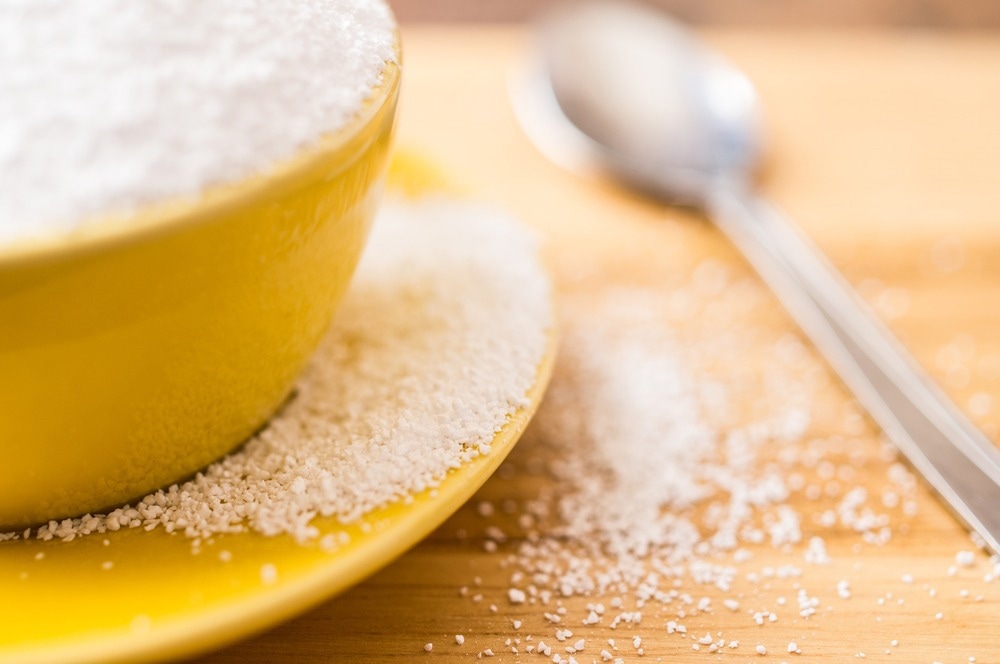Artificial sweeteners can increase blood sugar - the gut microbiome seems to explain this
Sugar is one of the most commonly consumed flavorings because its addictive sweetness enhances the taste of almost all other flavorings. Sugar is found in a variety of natural and other foods. In addition, sugar provides instant energy and nourishes a variety of commensal and symbiotic organisms in the human microbiome. Learning: A Gut Response: Microbiome-Driven Glycemic Effects of Non-Nutritional Sweeteners. Image credit: Photosiber / Shutterstock.com A new Cell journal study describes the effects of non-nutritive sweeteners (NNS), commonly used to avoid increased calorie intake while satisfying sweet cravings, on the gut microbiome. These NNS, including…

Artificial sweeteners can increase blood sugar - the gut microbiome seems to explain this
Sugar is one of the most commonly consumed flavorings because its addictive sweetness enhances the taste of almost all other flavorings. Sugar is found in a variety of natural and other foods. In addition, sugar provides instant energy and nourishes a variety of commensal and symbiotic organisms in the human microbiome.
Learn: A gut response: Microbiome-driven glycemic effects of non-nutritive sweeteners.Photo credit: Photosiber / Shutterstock.com
A new one cell Journal study describes the effects of non-nutritive sweeteners (NNS), commonly used to avoid increased calorie intake while satisfying cravings for something sweet, on the gut microbiome. These NNS, including saccharin, sucralose and stevia, are commonly consumed by health-conscious individuals who want to limit their calorie intake. However, previous research shows adverse metabolic effects due to ingestion of these products.
The current study summarizes available evidence on how gut microbiome activity mediates this effect following exposure to these sweeteners.
introduction
It is estimated that nearly half of adults and 25% of children in the United States rely on NNS for their sweet tooth cravings. The initial increase in consumption of these alternative sweeteners was due to their metabolic inertia. However, prospective cohort studies showed a higher risk of obesity and type 2 diabetes in groups with higher NNS intake.
However, this correlation has not been clearly confirmed by randomized controlled trials (RCTs), which produced conflicting results. The mechanism of action of these sweeteners on the human intestine as well as their potential to influence human metabolic activity remains controversial.
The current study presents new insights into how exposure to NNS influences glycemic control in humans through its effects on the gut microbiome. Although previous studies have examined this aspect in rodents, there are limited studies on its effects on humans.
The gut microbiome is made up of trillions of microorganisms that are critical to human health. When NNS are ingested, they are not digested, making them available to gut microbes. This subsequently leads to the production of intermediates and by-products that alter host metabolism.
The current study used four types of NNS to understand how they affected the gut microbiome in 120 healthy adults who had not been previously exposed to these compounds.
This RCT included two arms, one of which included adults who consumed one of these sweeteners daily for two weeks, while another group consumed glucose or no sweetener. The dosage was below the acceptable limit.
Study results
The current study reported specific effects on the microbiome and plasma metabolite profile after ingestion of each type of NNS. In addition, saccharin and sucralose resulted in poor glycemic responses.
Glucose tolerance was measured using continuous glucose monitoring devices. This allowed the author to understand how glycemic responses changed over the two weeks of the study in a free-living environment.
Interestingly, the response to sucralose depended on the microbiome profile at baseline.
These results support the idea that different human responses to exposure to non-nutritive sweeteners may be determined by unique host and microbiome characteristics.”
The presence of natural sugars also influenced glycemic responses. Previous research showed a rapid increase in insulin resistance when sucralose was used with natural carbohydrates.
In the future, potential differences in glycemic responses following NNS ingestion in individuals with obesity, diabetes, and other metabolic dysregulation diseases need to be measured. The results of this study will greatly influence current recommendations for replacing natural sweeteners with NNS under such conditions, both for weight loss and for stabilization of blood glucose levels.
The changes in the composition and function of the gut microbiome were examined using fecal microbiota transplants from human subjects, which showed the most significant response in germ-free mice with sterile intestines. These individuals were classified as responders, indicating that they had poor glycemic responses after taking NNS compared to baseline. Conversely, non-responders showed no change in glycemic response.
When mice were transplanted with stool samples from responders, they developed impaired glycemic responses. This was different from those who received stool samples from non-responders. This suggests that changes in the gut microbiome underlie the inability to normalize glucose levels when faced with a glucose load. This condition would otherwise be called glucose intolerance.
Future directions
Metagenomic shotgun sequencing and pathway analysis have been used to investigate the structural and functional aspects of the gut microbiome of different species.
Further studies are needed to correlate these results with insulin and incretin responses as well as glucose levels in response to NNS intake. This will add important information about the hormonal regulation of glucose homeostasis in this situation. Furthermore, a combination of NNS with natural sweeteners needs to be used to understand how NNS influences the metabolism of glucose and other natural sugars by the microbiome.
Elucidating the mechanisms underlying the metabolic consequences of consuming non-nutritive sweeteners in humans may enable personalized approaches to nutritional recommendations to improve metabolic health.”
Reference:
- Seite, KA (2022). Eine Darmreaktion: Mikrobiom-gesteuerte glykämische Wirkungen von nicht nahrhaften Süßstoffen. Zelle. doi:10.1016/j.cell.2022.08.007.
.

 Suche
Suche
 Mein Konto
Mein Konto

